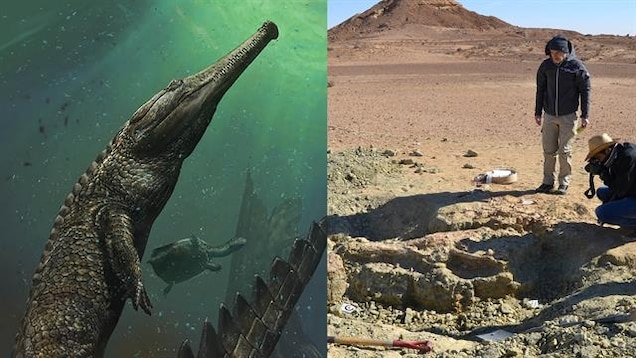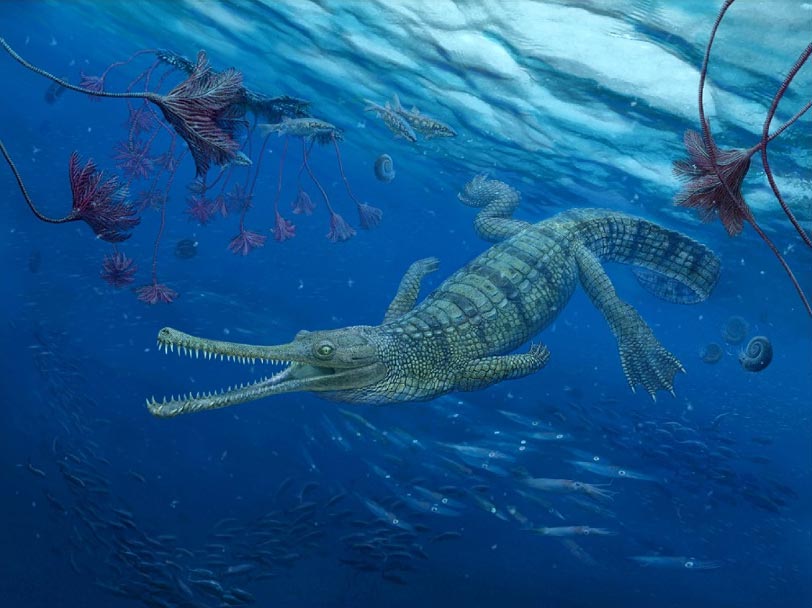In the Monte Alto region in the Brazilian state of São Paulo, paleontologists have unearthed the fossilized remains of a new crocodyliform species that lived at the same time as giant titanosaurs and carnivorous abelisaurid dinosaurs.

Life reconstruction of Titanochampsa iorii. Image credit: Julia d’Oliveira.
The newly-identified crocodyliform species lived in what is now Brazil during the Late Cretaceous epoch, between 72 and 66 million years ago.
The ancient animal inhabited an arid to semiarid environment, where ephemeral water bodies were common.

Named Titanochampsa iorii, it was between 3 and 6 m (10-20 feet) long and had a very strong bite.
It likely belonged to Neosuchia, a clade that includes all modern extant crocodilians and their closest fossil relatives.

“Both the large size of Titanochampsa iorii and its inferred strong bite are compatible with an amphibian lifestyle, including ambushing behavior, as seen in most crocodiles nowadays and matching its possible affinity to Eusuchia,” said Universidade de São Paulo paleontologist Thiago Fachini and his colleagues.
The fossilized remains of Titanochampsa iorii were found in 1987 in the deposits of the Marília Formation in the Monte Alto area, the state of São Paulo, Brazil.
The material is composed of a partially preserved skull roof, including most of its right side.

“Given its large size and fragmentary nature, the material was initially labeled as a partial titanosaur skull in the museum exhibition, but later acknowledged as a fragmentary crocodyliform skull,” the paleontologists said.
“Despite its incompleteness, the specimen bears several unique characters,” they added.
“There are obvious signals of abrasion on the roof surface, but the ornamentation can still be observed, mainly on the squamosal, at the lateral corner of the skull.”

“It is composed of small regularly spaced pits and faint grooves.”
“In addition to representing a group so far little known in the Cretaceous of Brazil, Titanochampsa iorii contributes to a better understanding of the evolutionary aspects of crocodiles and why Neosuchia was successful, while the vast majority of crocodyliforms became extinct at the end of the Cretaceous period,” Fachini concluded.
Source: sci.news





